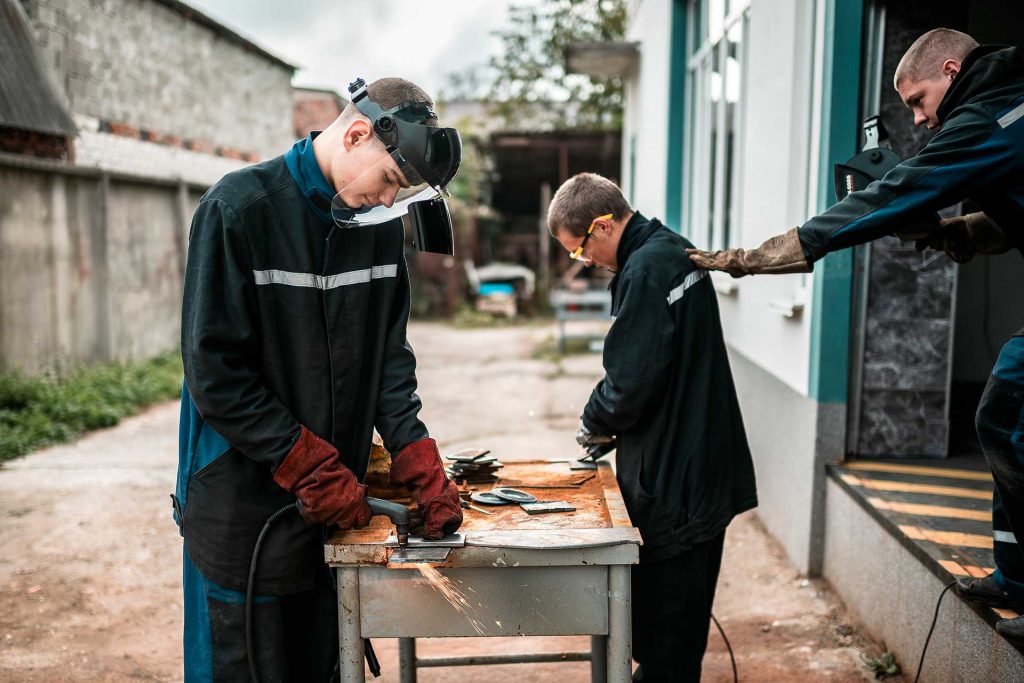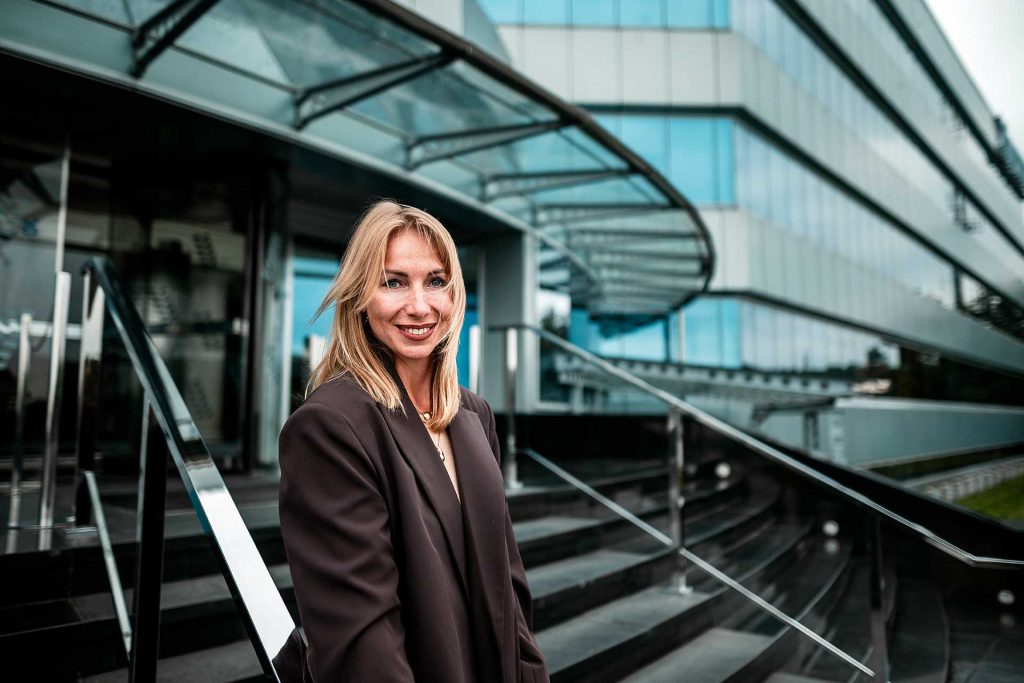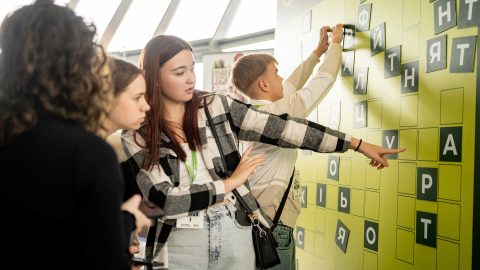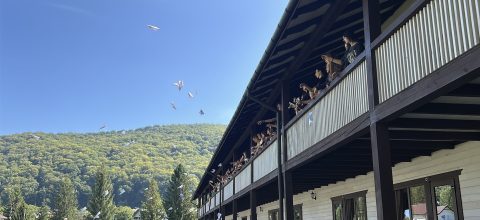Ukraine needs more than just hope – it needs workers
Vocational schools in Ukraine are raising their profile to encourage young people to become welders and engineers. The country is facing a severe shortage of skilled technical workers, who are now needed more than ever to repair the damage caused by the war.
Text: Erik Nyström
Photos: Antti Yrjönen
THE CLANG OF WELDING is the soundtrack of a busy morning for around a dozen students in Chernihiv. They join metals with precise, carefully considered movements. In the brand-new workshop of the vocational school for railway transport, you can sense the spark of a new profession.
These facilities have been crucial for 17-year-old Oleksandr Shulga when he began his three-year welding training in northern Ukraine. The premises equipped by Finn Church Aid (FCA) have tools that were not even available at his work placement at the factory.
“It’s cool to practice with a metal saw. I also came here because of the teacher – he spoke highly of the training. This is a cool profession, I recommend it to everyone,” says Shulga.

The teacher he refers to is Yevhen Leheza. Leheza confirms that high-quality facilities are crucial in young people’s study choices. Modern equipment conveys the message that the institution values education and prepares its students for the skills required in the workplace.
War damage keeps workers busy
These days, repairing the damage caused by the war keeps Ukrainians busy. The night before the interview, Russian drones struck the railways once again, which means more work for welders and other technical professionals.
However, future employment prospects alone are not enough for young people. Leheza knows that it is also important for them to feel that they are pursuing a valued education and profession.
“There is still a perception that vocational training is something you end up doing if your grades aren’t good enough for anything better. That perception needs to change,” he says.

CHANGING PERCEPTIONS of vocational education is a timely topic and an economic necessity, even in a country at war. Just over 11 per cent of working-age Ukrainians are unemployed, but there is a desperate shortage of labour in the construction and manufacturing industries. In the first half of 2025, there were 265,000 job vacancies, only half of which were filled – a sign that job supply and skills do not match.
The mobilization of the army, losses on the front lines, and emigration have cost Ukraine 40 per cent of its workforce, according to estimates by the Ukrainian think tank Razumkov Center.
Male-dominated industries are clearly suffering the most. That is why Myronivsky Hliboproduct (MHP), one of Ukraine’s largest employers, has started offering retraining to women, says Kseniia Motorina, the company’s head of youth engagement and development. MHP produces and processes agricultural products and employs 32,000 people.
“For example, one of our secretaries studied to become a driver during her maternity leave. To date, 400 women have graduated from our programme,” Motorina says.

Motorina believes that young people are the solution to Ukraine’s labour shortage. However, she fears that educated and talented young people will leave the country in search of a better future abroad.
Many young people still aspire to prestigious careers in the humanities or white-collar professions, even though these are precisely the fields where unemployment is high. Industry needs to increase its workforce by an estimated 20 per cent, but only two per cent of young people see their future in these fields.
19-YEAR-OLD Kyryl Biletskyi graduated a year ago from the agricultural engineering programme at the Berestyn vocational school in the Kharkiv region. Now studying at university, Biletskyi emphasizes how difficult it is to study remotely at vocational school. In eastern Ukraine, young people have been studying remotely for five years due to the pandemic and war.
“At vocational school, I constantly asked the teachers for permission to come to school to practice using the equipment, and they supported me,” Biletskyi says.

“Distance learning increases students’ responsibility to develop themselves.”
Conditions for in-person teaching have also become more difficult in northern Ukraine this fall. Russian drones are more common and air raid alerts are longer than they were in the spring.
When the air raid siren sounds in Chernihiv, Oleksandr Shulgan’s vocational school class trudges to the bomb shelter in their work clothes. In the shelter, they can continue their theory lessons, but they cannot practice welding there.
What would Shulga tell people outside Ukraine about what it’s like to be young in Ukraine today? He pauses to think about his answer. So long, in fact, that he has to consult his teacher, Leheza.
“Oleksandr hesitates because he is trying to understand what the question is asking,” Leheza says. “The truth is that it cannot be explained, it has to be experienced.”
—


